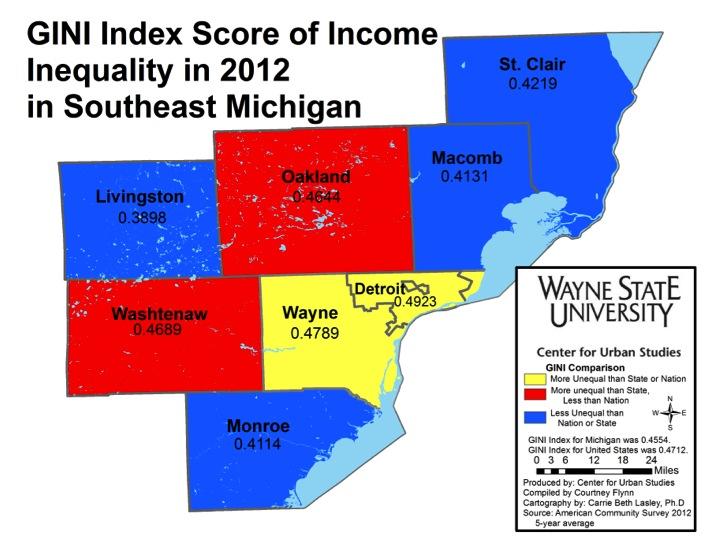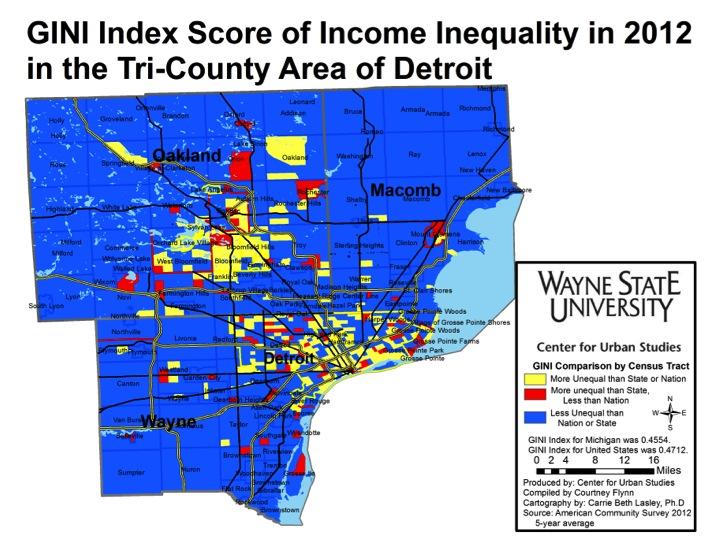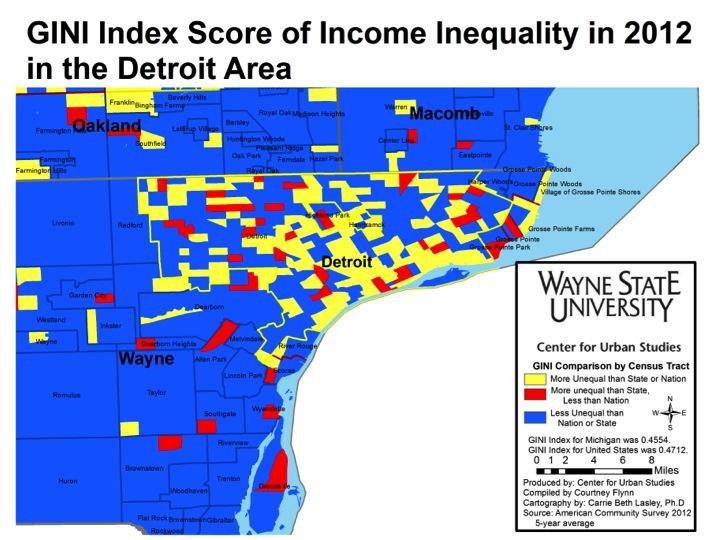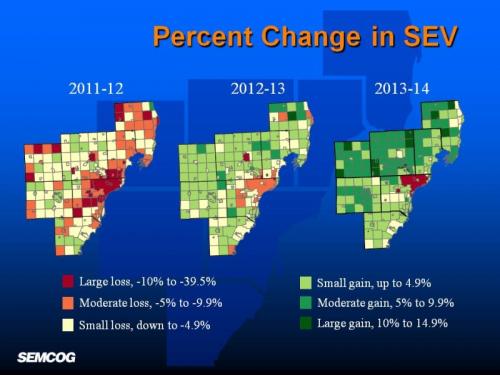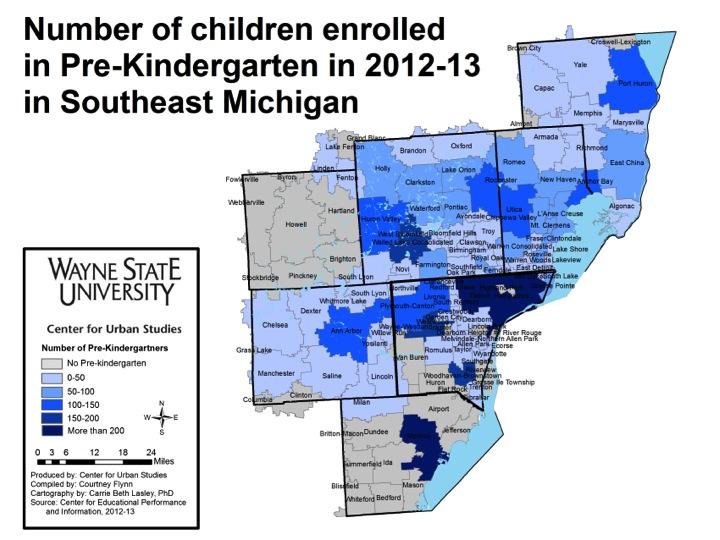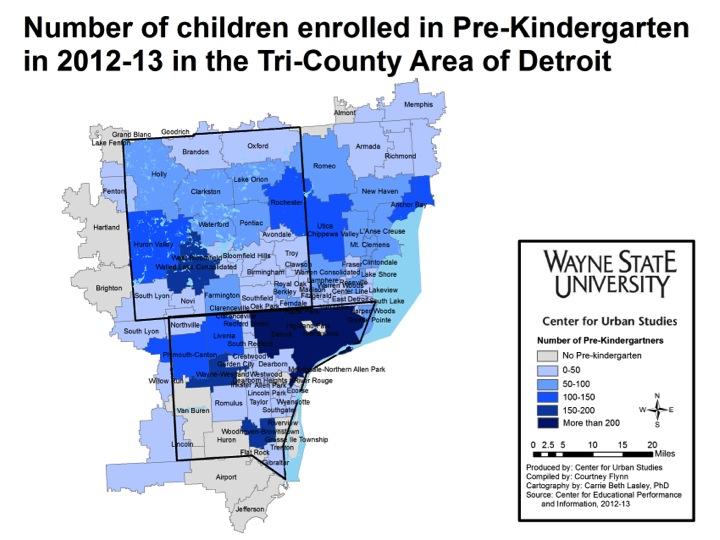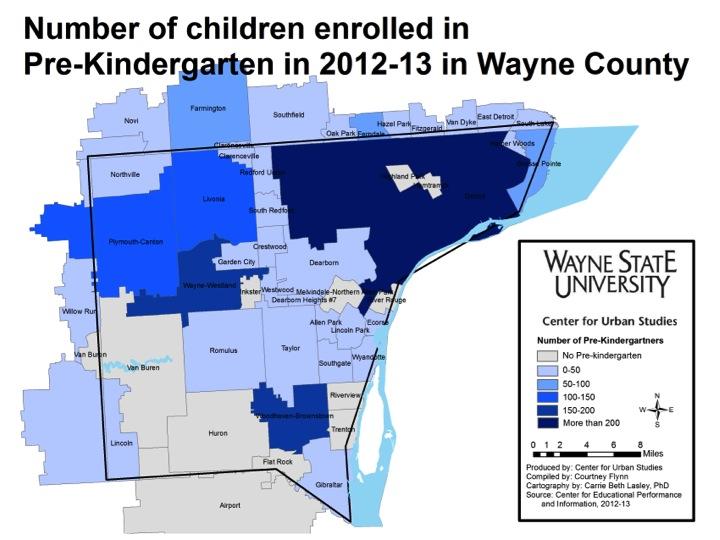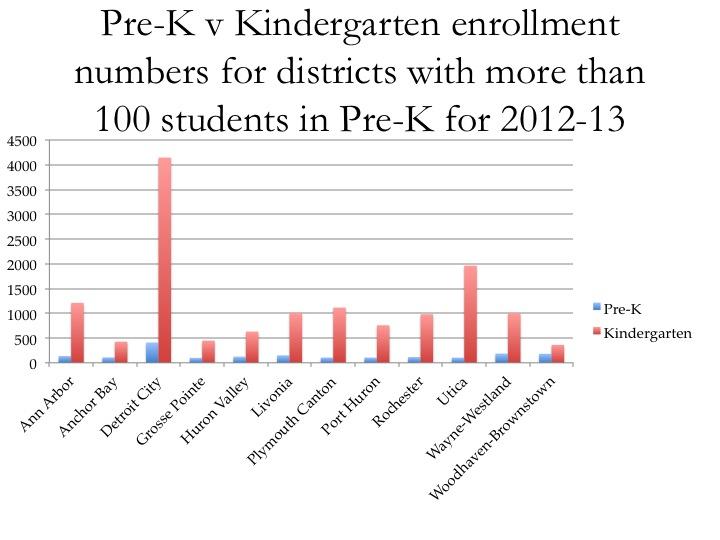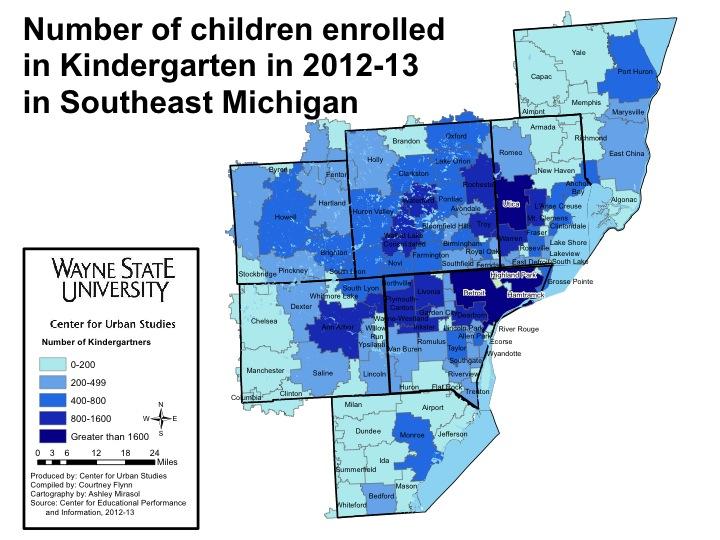The GINI Index is a statistical representation of income equality that is measured between 0 and 1. The closer a place is to 1, the higher income inequality is; with 0 signifying that total income equality is 0 (for a more in-depth explanation on the GINI Index and its background please click here). Just because income inequality is high in one area does not mean its income levels are low, or high. Rather, it represents the disparities between any and all income levels in a certain place. In this post we compare the seven counties, along with the municipalities and Census Tracts in the region, to the state and national GINI Index. In 2012, the GINI Index in Michigan was .4554 and the nation’s was .4712.
Thus, the GINI Index measures differentials in income levels in some area. Therefore it may also provide useful perspective to examine the income levels in areas across the region. These are explained in an earlier blog post here.
Wayne County, which is home to the city of Detroit, had a GINI Index of .4789 which was higher than the index for both the state, at .4554, and nation, at .4712. This score, according to the World Bank, is comparable to nations like Kenya, Nigeria and Zimbabwe.
Oakland and Washtenaw Counties’ indices were above that of the state but lower than that of the nation at .4644 and .4689, respectively.
Livingston County had the lowest GINI Index in the region at .3898. On a national scale, this index is similar to those of Israel, Lithuania, Turkey and Thailand.
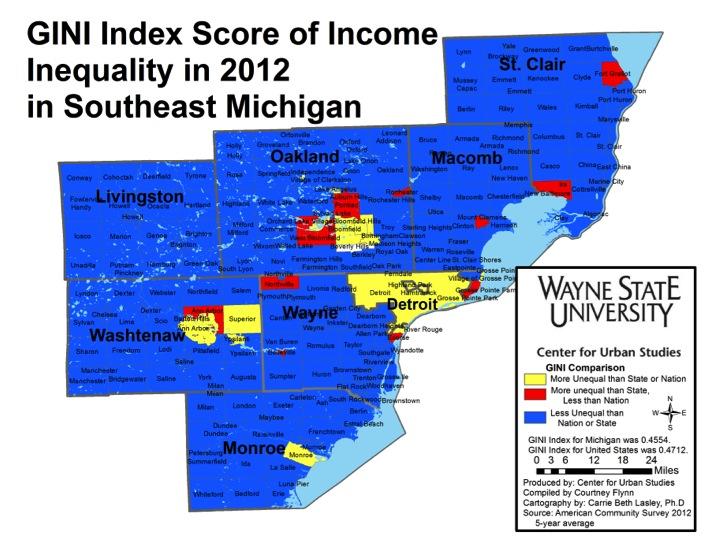
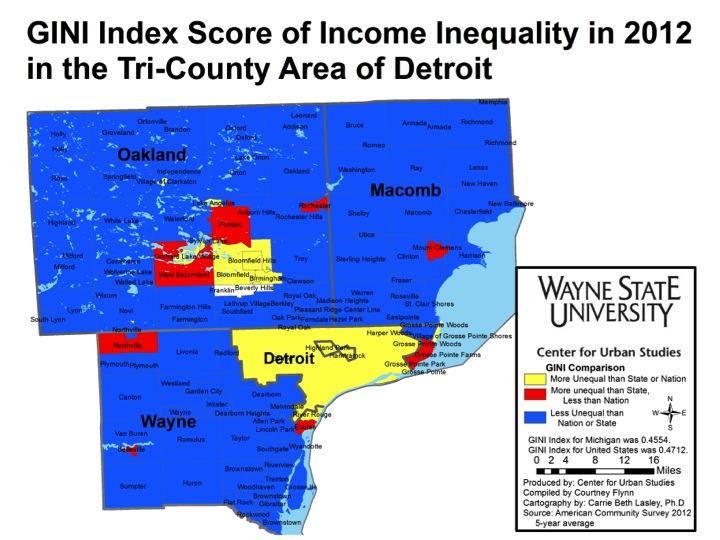
When looking at all the communities that make up the region, there were only a few with a GINI Index above (higher income differentials) that of the state and nation. In Wayne County, these communities were Detroit (.4923), Hamtramck (.474) and Highland Park (.4996). In Oakland County, these communities were Bloomfield (.5057), Bloomfield Hills (.5258), Orchard Lake Village (.5112) Birmingham (.5088). The four communities in Washtenaw County with a GINI Index above that of the state and nation were Ann Arbor (.4996), Barton Hills (.5002), Superior (.4905) and Ypsilanti (.4813). The only community in Monroe County with this characteristic was the township of Monroe (.4723).
Oakland and Washtenaw counties both had four communities with a GINI Index above national and state averages. All of the communities in Oakland County with such a characteristic had a GINI Index above .5; Birmingham had the highest index in the region. Such high GINI Index numbers in places like Birmingham and Bloomfield show that disparity is not isolated to just poor communities.
Again, the high GINI Indices of places like Birmingham and Bloomfield show that income inequality is not only prevalent in lower income areas. By clicking here, you can see what income levels are in cities a high or a low GINI Index. For example, in 2009 Birmingham’s median household income was about $96,000, the city of Monroe’s was about $45,000 and the city of Detroit’s was about $34,000.
When focusing in on Census tracts in the tri-county region, it becomes clear that there were more areas that had a GINI Index above that of the state and nation than the aggregated data indicates. The above map shows that higher rates of income inequality existed in some sections of a community, but not others. For example, the northwest portion of Oakland Township had a higher rate of income inequality than the aggregated data indicates. There were also several neighborhoods in Detroit where income inequality was below that of the state and nation. Areas with substantial income inequality in Detroit were found in the Downtown, Midtown and Riverfront areas.
Not only does income inequality exist in Detroit and the surrounding areas, but also across the country. In an article from The Atlantic, it’s described how the top 10 percent of America’s wealthiest residents earned more than half of the country’s income. This is particularly exemplified in places such as New York, L.A. and San Francisco. In 2012 there were more than 19 metro-areas with a GINI coefficient above .50.
